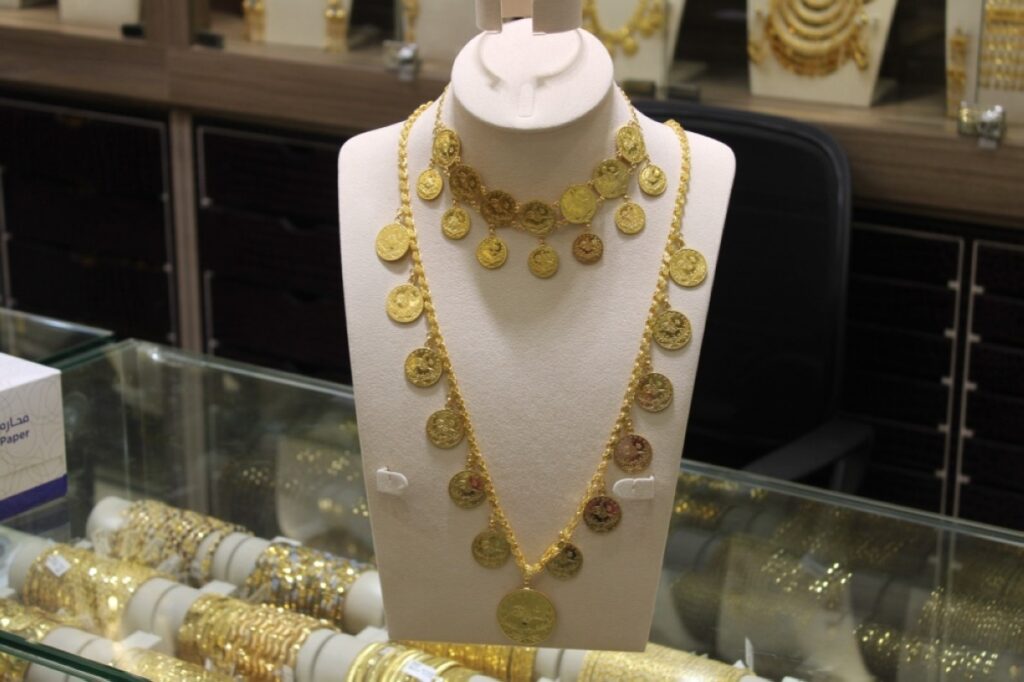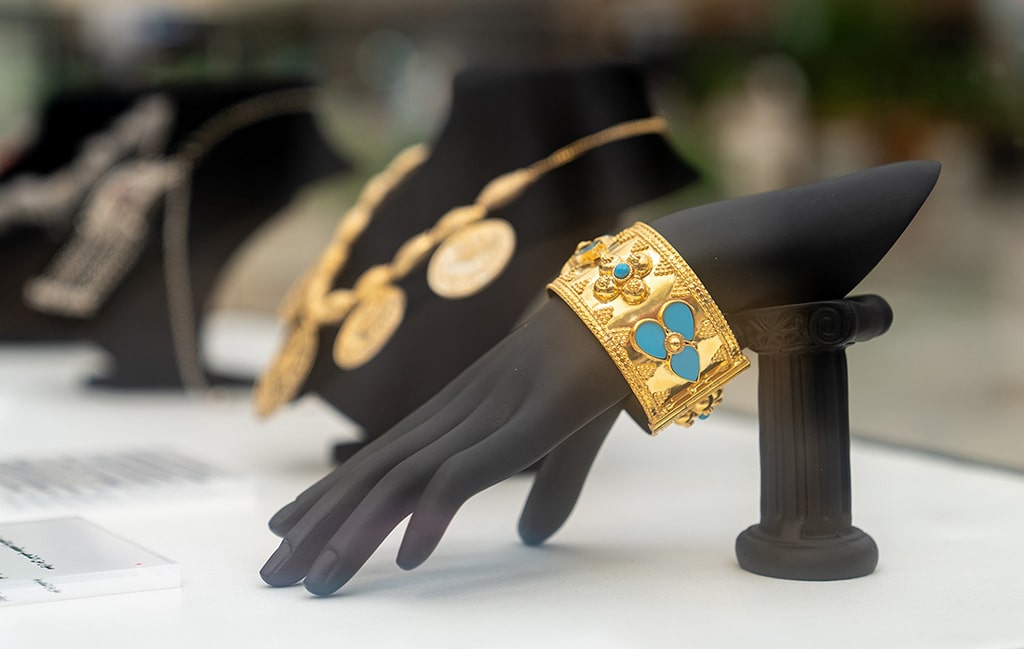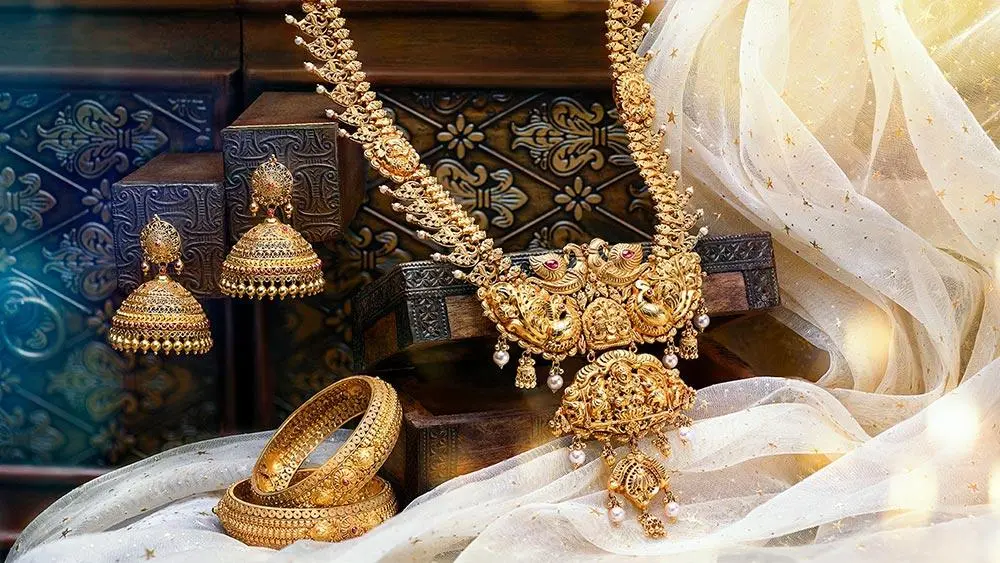Kuwaiti traditional jewelry is more than just an accessory; it is a profound reflection of history, culture, and identity. Each piece, meticulously crafted and adorned, carries stories of generations past, showcasing a unique blend of artistry, tradition, and personal expression. Beyond its aesthetic appeal, Kuwaiti jewelry embodies symbolism that resonates deeply with cultural pride, family heritage, and societal values.
A Legacy of Craftsmanship
Kuwait has a rich history of jewelry-making that spans centuries, rooted in both Bedouin traditions and the influence of trade with India, Persia, and the Arabian Peninsula. Artisans dedicate countless hours to perfecting their craft, ensuring every piece is not only visually stunning but also meaningful.
Traditional jewelry often incorporates gold, silver, pearls, and precious gemstones. The meticulous attention to detail in designs, from filigree patterns to delicate engravings, highlights the value placed on precision and artistic expression. Each ornament tells a story, bridging the past with the present, and reflecting the resilience and ingenuity of Kuwaiti culture.
Jewelry as a Symbol of Status and Wealth
In Kuwait, jewelry has historically signified social status, wealth, and prestige. Families often passed down jewelry through generations, with pieces serving as both adornment and investment. Gold bracelets, necklaces, and rings were not merely decorative; they symbolized security, prosperity, and the strength of familial bonds.
The value of jewelry in Kuwaiti society also extended to ceremonial occasions. Brides would wear ornate gold sets during weddings, symbolizing not only personal beauty but also the family’s heritage and economic standing. This tradition reinforced the deep connection between jewelry and identity.

Cultural and Spiritual Significance
Kuwaiti traditional jewelry often carries spiritual and protective symbolism. Many designs feature motifs believed to ward off evil, attract good fortune, or symbolize longevity and health. Common motifs include stars, crescents, floral patterns, and geometric shapes, each imbued with cultural meaning.
For example, the use of the crescent moon in necklaces or earrings represents guidance, protection, and divine blessing. Floral patterns symbolize growth, renewal, and prosperity. These designs reflect the intimate relationship between jewelry and cultural beliefs, where adornment becomes a form of spiritual expression.
Jewelry as a Reflection of Personal Identity
Beyond social and spiritual symbolism, Kuwaiti jewelry allows for personal storytelling. Each piece can reflect the wearer’s personality, achievements, or aspirations. Women, in particular, express individuality through choices of rings, bracelets, and necklaces, selecting designs that resonate with their personal journey.
This aspect of jewelry as a form of self-expression is particularly evident in contemporary adaptations of traditional pieces. While maintaining heritage-inspired designs, modern Kuwaiti women incorporate personalized engravings or gemstone selections, merging tradition with modern identity.
The Role of Jewelry in Celebrations and Traditions
Traditional jewelry plays a central role in Kuwaiti celebrations and cultural ceremonies. Weddings, religious holidays, and family milestones are often marked by gifting or wearing significant pieces. These occasions reinforce the symbolic weight of jewelry as a marker of love, respect, and communal belonging.
Bridal jewelry, in particular, holds exceptional importance. A bride’s gold and pearl ensemble is carefully curated, reflecting both family wealth and the cultural artistry of the region. Each piece tells a story of lineage, love, and societal values, becoming a cherished part of family history.
Pearls: The Heart of Kuwaiti Jewelry
Historically, Kuwait was known for its thriving pearl industry, and pearls remain central to its jewelry tradition. Pearls symbolize purity, wisdom, and wealth, and they hold a special place in Kuwaiti cultural identity.
Pearl necklaces and earrings were often worn by women as symbols of elegance and sophistication. The natural beauty of pearls, combined with intricate gold settings, created a harmonious balance of simplicity and opulence, highlighting the wearer’s grace and status.

Gold and Gemstones: Symbols of Prosperity
Gold is perhaps the most prominent element in Kuwaiti jewelry, representing prosperity, resilience, and timeless beauty. Gold designs vary from simple bangles to intricate necklaces adorned with precious gemstones such as rubies, emeralds, and sapphires.
Gemstones add additional layers of meaning. Rubies symbolize passion and courage, emeralds represent growth and harmony, and sapphires convey wisdom and virtue. Through these combinations, jewelry becomes a canvas of symbolic storytelling, merging natural beauty with cultural significance.
Filigree Work: Artistry and Symbolism
One of the hallmarks of Kuwaiti jewelry is filigree work a delicate and intricate technique using fine gold or silver threads to create elaborate patterns. Filigree designs often mimic natural motifs like leaves, flowers, and waves, reflecting a deep appreciation for nature and life’s interconnectedness.
The complexity of filigree also symbolizes patience, dedication, and craftsmanship. Owning or wearing such jewelry conveys a respect for artistic excellence and cultural heritage, connecting the individual to centuries of Kuwaiti tradition.
Jewelry as a Link Between Generations
Passing down jewelry from one generation to the next reinforces family bonds and preserves cultural heritage. Each inherited piece carries memories, stories, and lessons, acting as a tangible connection to ancestors.
Grandmothers gifting gold necklaces or bracelets to their granddaughters not only transmit wealth but also instill pride in cultural identity. The symbolic continuity ensures that Kuwaiti traditions remain alive, bridging the past, present, and future through cherished ornaments.
Contemporary Influence and Modern Adaptation
While traditional jewelry remains treasured, contemporary Kuwaiti designers are reinterpreting heritage with modern aesthetics. Minimalist designs, mixed metals, and innovative gemstone combinations allow younger generations to honor tradition while expressing modern individuality.
This fusion of old and new highlights the adaptability of Kuwaiti jewelry as a cultural symbol. It reflects a society that respects its past while embracing change, ensuring that traditional symbolism remains relevant in contemporary life.
Jewelry as an Artistic Expression
Beyond its cultural, social, and spiritual symbolism, Kuwaiti jewelry is a form of art. Each piece reflects the creativity, vision, and skill of the artisan, transforming raw materials into masterpieces. The artistic value of jewelry elevates it from mere accessory to a meaningful statement of identity and aesthetic appreciation.
Conclusion
Kuwaiti traditional jewelry is far more than decorative ornamentation it is a profound expression of heritage, identity, and values. From gold and pearls to intricate filigree patterns, each piece tells a story of history, family, and personal significance. It embodies status, spirituality, personal expression, and artistic excellence, serving as a link between generations and a testament to Kuwait’s rich cultural legacy.
Embracing traditional jewelry allows individuals to celebrate their roots, express their individuality, and honor the artistry of those who came before them. It is a radiant symbol of Kuwaiti pride, weaving together the beauty of material craftsmanship with the enduring power of cultural identity.
Do follow Gulf Magazine on Instagram.
Also Read – Unlocking the Rich World of Kuwaiti Storytelling Through Poetry



